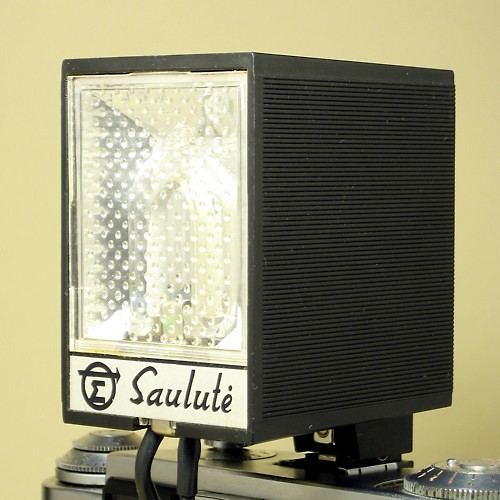Saulutė

|
| An 1979 Saulutė (with a revolving calculator at the back) image by Chemnitzer (Image rights) |
Saulutė — the name means daisy in Lithuanian — electronic flashes were made by the V.I. Lenin Calculating Machines Factory of Vilnius and the Modulis Calculating Machines Factory of Pabradė in the Soviet Socialist Lithuanian Republic. Two types were marketed in 1970s and 1980s.
The Saulutė was a simple flash unit similar to the popular FIL-41, Foton or Chaika-2 flashes - it was powered with 220 V AC mains, used an U-shaped tube giving it a guide number of 19 m for 100 ASA film (16 m for 65 GOST) and lighting angle of 60 degrees; it could be synchronized by both the hot shoe or a fixed sync cord. The flash had dimensions 73×50×88 mm and weighed 300 g. Two variants of the Saulutė existed - earlier had a rotating calculator for establishing the correct exposure, later (made by Modulis) - a simple chart.
The Saulutė-2 was a more advanced construction - its head could be rotated up to 90 degrees to the sides or 60 degrees upwards. The flash could be powered in three ways - directly with 220V AC mains (or a 300V DC battery power pack), with a removable rechargeable battery (charged inside the flash unit) or with four AA size cells replacing the rechargeable battery. Saulutė-2 had a guide number of 21m for 100 ASA (18m for 65 GOST) and lighting angle of 50 degrees. It was synchronized by a hot shoe equipped with a locking lever securing it on a camera. The flash was really huge - it had dimensions of 71×57×179 mm and weighed 400g.